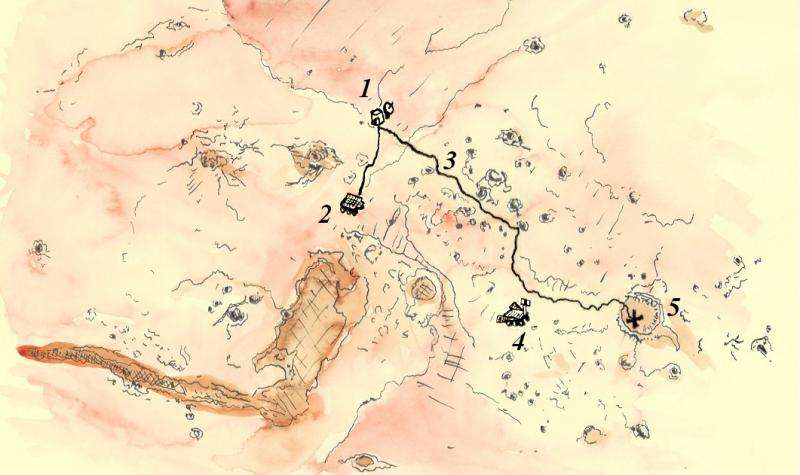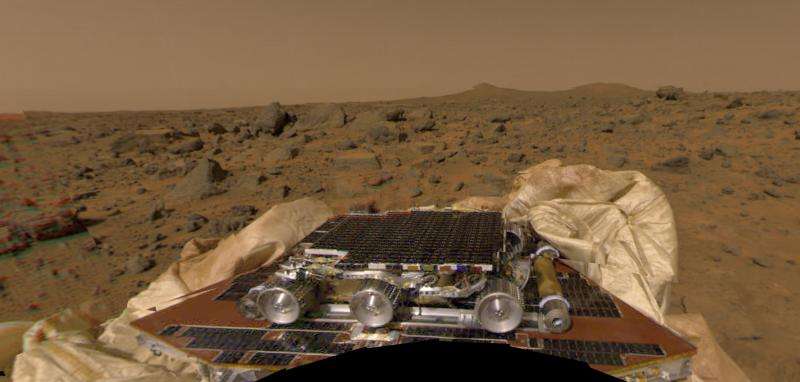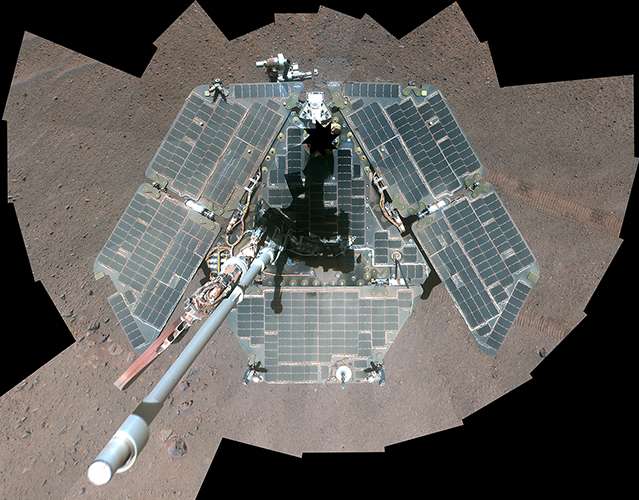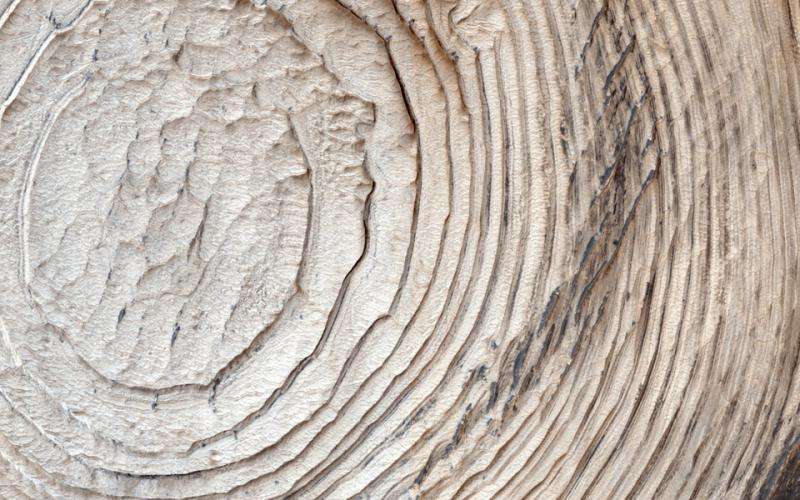The Martian astrobiologist

Mars has been a focus of astrobiology and exobiology research since the early days of NASA. Even before the invention of the telescope, Mars captured the imagination of scientists and philosophers who were interested in life's potential beyond Earth.
With the Viking landers in the 1970s, Mars became the target of NASA's first dedicated mission to search for life in our solar system. Ever since, further robotic missions have expanded our knowledge of Mars, revealing many sites on the surface that could hold evidence of past or present life.
Humans have yet to make the journey, but the desire to send teams of researchers to visit scientific sites on Mars has been a driving force for space exploration. The question of life on Mars is so compelling that artists, writers and some of humankind's greatest thinkers have been exploring the possibility through fiction for centuries. Recent weeks have showcased two big news stories about Mars that capture both our scientific and fictional fascinations with the red planet.
On September 28th, 2015, NASA announced evidence that liquid water does exist on Mars today. Liquid water is one of the key ingredients for life as we know it, and its presence on Mars raises hopes that we may soon discover the first known living organisms native to a planet other than Earth. Days later, a new Hollywood epic, The Martian, arrived in theatres.
The Martian, based on the novel by Andy Weir, follows the story an astronaut stranded on Mars after harrowing circumstances force his colleagues to abort their mission. Although fictional, the story takes place in the near future and finds inspiration in real-life work performed by NASA and other institutions around the world. NASA is already developing technologies that appear in the film, and the Astrobiology Program has been studying many of the sites on Mars that feature on the big screen.
In The Martian, astronaut Mark Watney undergoes an epic journey as he struggles to survive after being left alone on Mars. He draws on his skills as a botanist and mechanical engineer to overcome many obstacles that the harsh martian environment throws at him. However, if Mark Watney had been an astrobiologists, and survival wasn't his first priority, there are many detours he could have taken along his route to perform some spectacular scientific investigations.
To check out some of the sites, a great place to start is NASA's online tool Mars Trek: marstrek.jpl.nasa.gov. Mars Trek is a web-based application that allows anyone to explore high-quality visualizations of Mars using 50 years of data from NASA missions and other institutions.
The Journey
Watney begins at the fictional landing site of the Ares 3 mission, placed at the southern reaches of Mars' Acidalia Planitia. From here, he travels south to the real-life site of NASA's Pathfinder mission and the Sojourner rover. His path eventually takes him all the way across Mawrth Vallis in an attempt to reach Schiaparelli Crater. With a little more time (and a lot more resources), Watney could have made some incredible observations along the way that would have greatly advanced our understanding of life's potential on Mars.
What follows is just a small snapshot of some of the astrobiological sites on Mars that Watney could have taken in if his journey had been a little less desperate. The truth is, any samples he could have collected, or experiments performed, would be spectacular. This is just a snapshot of some real-life highlights along his fictional route.
Acidalia Planitia
Acidalia Planitia is a huge area on Mars, centered at 49.8°N 339.3°E, and sits northeast of the famous Valles Marineris. In the story, Watney touches down in a region of wind-blown deposits and weathered craters at the southern reaches of Acidalia Planatia, just 800 kilometers north of the actual site of the 1997 Pathfinder landing site (now designated Carl Sagan Memorial Station).
Because Acidalia Planatia is such a large region, there are many sites of interest to astrobiology here. At the far north of Acidalia Planatia is an area dotted with geological structures that could be the ancient remnants of mud volcanoes, where wet mud would have been belched out to the martian surface from underground. Some scientists believe that this would be a good place to search for biosignatures of ancient life on Mars, but it would actually be a long trek for Watney to undertake from Ares 3. Instead, Watney turned south toward Pathfinder.
Pathfinder
NASA's Pathfinder mission delivered a lander and rover to a region known as Ares Vallis on Mars. The choice of landing site was no mistake. Ares Vallis is what is known as an outflow channel, and it may have been formed by liquid water flowing out of a region of hills to the south known as Margaritifer Terra. The water would have flowed from the hills and through the Xanthe Highlands, ending in a feature called Chryse Planitia, which bears a striking resemblance to deltas on Earth.
There is evidence of past water erosion in Chryse Planitia, which may have also received outflows of water from Valles Marineris. This site would be an interesting place for an astrobiologist to explore because any environment where liquid water was once present might contain clues about past habitability on Mars, or even biosignatures of ancient life. It's a shame that Watney didn't have the resources to carry samples from the Pathfinder site for further study.

Marwth Vallis
Watney's next major journey takes him from Ares 3 across Marwth Vallis, a region with a plethora of sites that could have easily distracted him from his survival mission had he been trained as an astrobiologist. Marwth Vallis was a finalist in the selection of landing sites for NASA's Mars Science Laboratory (MSL) mission and its Curiosity rover.
In the end, Curiosity landed halfway around the planet at Gale Crater in 2012, far away from Watney's path. But before the mission launched, Marwth Vallis was under scrutiny due to the fact that it contains the best-known exposure of clay minerals at the surface of Mars. On Earth, clays form in wet environments and their location on Mars is a good sign that a watery environment was once present. Clays also trap organics, molecules essential for life as we know it.
For more about Marwth Vallis and the interesting features is contains, check out the discussions from the 4th MSL Landing Site Workshop in 2010 from the American Geophysical Union (AGU) at: blogs.agu.org/martianchronicle … site-workshop-day-1/
Meridiani
After his treacherous journey through Marwth Vallis, Watney turns south into Meridiani Planum, the landing site of NASA's Mars Exploration Rover (MER) Opportunity. Even in the story, Watney is tempted to head just a bit further south to search for Opportunity. If he had been an astrobiologists, he probably wouldn't have been able to resist the temptation.
Merdiani Planum was selected after rigorous study as Opportunity's landing site because of its high scientific value. For astrobiology, the main draw is evidence that liquid water was once present in the area. Meridiani has an ancient layer of a mineral known as hematite. Hematite is an iron oxide, and wet environments are often a key to its formation on Earth. There are ways in which hematite can form without water, but its presence in Meridiani was a big draw for team behind the MER rovers.
Opportunity confirmed many scientists' suspicions about Meridiani, providing compelling evidence for a wet environment on ancient Mars.
At the rim of Endeavor Crater, Opportunity uncovered clays that were older than the impact event that formed the crater itself. They are the oldest rocks that Opportunity has examined thus far, and they could have formed in waters that were habitable for life. The findings also suggest that the water might have persisted for long periods of time. Grabbing a sample from these rocks would be a high priority for any wandering astrobiologist.
Opportunity also spotted a few meteorites on Meridiani Planum, and studying these rocks from space could help astrobiologists understand whether or not the ingredients for life's origins could have been delivered to Mars when the planet was warmer and wetter.
An astrobiologist on Mars would have a field day exploring all of the interesting sites that Opportunity has uncovered during its incredible decade-long journey on Mars (1).
Schiaparelli crater
Watney's end goal as he heads across Meridiani Planum is to reach Shiaparellicrater. Shiaparelli is a relatively large crater some 460 kilometers in diameter. If Watney's fictional journey had been focused on astrobiology, this would still be a great destination for a visit.

Outcrops of ancient rock could be present on Shiaparelli's floor, and the rim of the crater itself also provides access to rocks that cover a long period of Mars' geological history. There is even evidence that sedimentary deposits in the crater could have been left behind by flowing water.
The biggest draw of Shiaparelli, however, is the presence of hydrated minerals. The European Space Agency's (ESA) Mars Express mission has sent back images of deposits inside Shiaparelli that are similar to those found when lakes on Earth evaporate. This has led some to theorize that a martian lake once filled parts of the crater. These deposits of hydrated minerals rest near the surface, and would be an excellent place for astrobiologists to explore.
Alternate Routes
If Watney had chosen an alternate route to Schiaparelli, via Ares Vallis, he could have also hit a few more sites of interest. After grabbing plenty of samples from Ares Vallis itself, he would have reached Firsoff crater.
Firsoff crater is one of the sites being considered for NASA's upcoming Mars 2020 rover, and there would be a lot to see here. The University of Arizona's High Resolution Imaging Science Experiment (HiRISE) onboard the Mars Reconnaissance Orbiter has provided images of many features around Firsoff crater that would be worth a stop. A detailed map of the points of interest for Mars 2020 can be found here: www.uahirise.org/hiwish/view/101424
The big draw of Firsoff is the presence of Equitorial Layered Deposits (EDL) inside the crater. These mounds of material have been interpreted by some as 'mud volcanoes,' and could have been formed by water upwelling from underground and evaporating (2). The possibility of groundwater rising to the surface raises many questions about whether or not the EDLs would be a good place to search for signs of past or present life.

Another point of interest on this route is Oxia Palus, a site that has been considered for future Mars landings, including the ESA's ExoMars 2018mission. Ancient, clay-rich rocks feature here, and they would definitely be worth a look for any passing astrobiologist.
A Walk on Mars
In The Martian, Watney's journey is focused on his survival. If a real-life astronaut were to touch down at the site of the fictional Ares 3 mission, there are many more areas of interest on Mars that could be reached over a similar distance by a wandering astrobiologist. This includes other candidate sites that were considered for the landing of NASA's Curiosity rover, such as Holden and Eberswalde craters.
NASA is currently developing many technologies that could make human exploration of Mars a reality. For aspiring astrobiologists interested in where they might want to explore if they make it onto a future NASA mission to Mars, check out the Explore Mars Trek at: mars-map/fullscreen/" target="_blank">mars.nasa.gov/maps/explore-657 … e2b2-map/fullscreen/
The list below provides a few hints for some other astrobiology sites on Mars that you might be able to reach if you ever find yourself on a cross-country martian roadtrip:
- Terminus of Sabrina Vallis
- Hypanis delta
- Valles Marineris: Melas Basin and Coprates Chasma
- Eastern Margaritifer Terra
More information: Andrew H. Knoll et al. An astrobiological perspective on Meridiani Planum, Earth and Planetary Science Letters (2005). DOI: 10.1016/j.epsl.2005.09.045
M. Pondrelli et al. Mud volcanoes in the geologic record of Mars: The case of Firsoff crater, Earth and Planetary Science Letters (2011). DOI: 10.1016/j.epsl.2011.02.027
Journal information: Earth and Planetary Science Letters
Source: Astrobio.net
This story is republished courtesy of NASA's Astrobiology Magazine. Explore the Earth and beyond at www.astrobio.net .




















